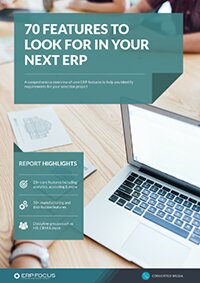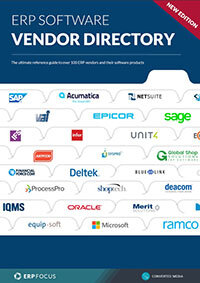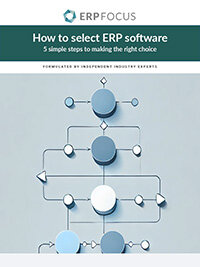Best practices for implementing financial ERPs in hospitality
The hospitality industry is currently undergoing tremendous change, and we’ve certainly felt it here at the Atlanta Convention and Visitors Bureau (ACVB). Many of the industry organizations we work with to help bring visitors to Atlanta are increasingly incorporating modern technology into their business models. Mobile apps, virtual reality, chatbots and the like are becoming the norm. At the same time, the hospitality industry is simply becoming more complex. With more and more businesses becoming multi-entity, spanning multiple properties or specialized divisions, the complexity of business operations has drastically increased.
Right in the thick of this change and growth, we recognized the opportunity to tackle this complexity head-on by upgrading our ERP system to a cloud-based solution. Now, after implementing Sage Intacct, I can say with confidence that upgrading to a secure, cloud-based platform for our back office systems has delivered exceptional returns in man-hours, and enabled our team to incorporate timely data-driven insights into our business strategy.
Create a foolproof ERP implementation plan with our easy-to-follow guide
If you are looking to upgrade your own system’s financial capabilities, here are three tips to drive the most value from your ERP implementation project.
Start With Your Goals
Before you get mired down comparing features and price points across platforms, think through your goals and needs when it comes to a core financial system. What is the primary motivator for this implementation or upgrade? For example, are you managing multiple properties whose financials take weeks to consolidate? Chart out the features and functionalities that are must-haves. What are some of the new capabilities that would be game changers for your organization?
At ACVB, we wanted to alleviate tedious data entry and processes that spanned data from multiple entities, major pain points for our financial team. With our new cloud-based system streamlining and automating a significant amount of manual work, we were able to reduce internal workloads by 70-90%. If you are unsure of where to start in this mapping process, chat with members of your peer group about their own ERP projects. Once you’ve clearly identified your goals, and charted out your ideal system, starting your project becomes a much more manageable task.
Remember to Integrate
Given the complex nature of financials in the hospitality industry, it’s highly likely that your organization is using, or will use, multiple solutions to manage business operations. Ensuring that your core financial system easily integrates with the other operational business solutions in use is critical for finding a platform that can grow with your company long-term.
At ACVB, since we already used SAP Concur for expense reporting, and Paycom for Payroll, it was important to us to find a system that would streamline the transfer of data from these systems into our core financial system used to run the business. When we implemented Sage Intacct, we also welcomed new integrations, such as Bill.com for our accounts payable team. Be sure to select a financial platform that integrates seamlessly with a wide range of software so you won’t lose valuable man-hours exporting, reformatting, and importing data across siloed software solutions.
Look Beyond Your Team
When selecting an ERP solution, consider the ways that different stakeholders within your organization might use the data and insights derived from the system. Will other teams in your organization be able to trust the technology to get the information they need, when they need it?
Because our financial platform is based in the cloud, our leadership team can access personalized dashboards in Sage Intacct day or night, in the office or remote, and even through their mobile devices. They can see information on our organization’s financial health without having to call on our finance team to pull data and compile ad hoc reports. Real-time access to accurate financial data, for the leadership team and beyond, has made it easier for everyone in our organization to incorporate data-driven insights into their work.
Upgrading your back office system can feel daunting, but when you find a solution that fits your business needs, the impact is far reaching. With integrated cloud-based technology, time once spent on managing the software and duplicate data entry can be re-allocated towards analysing data and strategy work that aligns with your overall business goals. And as paper trails become data trails, your leadership team and beyond will be armed with the insights they need to chart steady growth and hospitality business success – and that’s a business move any organization can get behind.
Free white paper

ERP Implementation: 9 steps to success
The 9 proven steps you should follow when implementing ERP

Featured white papers
-

70 features to look for in your next ERP
A comprehensive guide to help you identify requirements for your ERP selection
Download -

ERP Software Vendor Directory
Put the most comprehensive ERP vendor directory on your desk today
Download -

How to Select ERP
Learn to select your ERP in 5 easy steps by following our expert's advice
Download
Related articles
-

Top benefits of ERP inventory management
How an ERP helps inventory management including four key advatages
-

Secret KPI: Why Your ERP Implementation Team Matters More Than Software
Learn how Godlan ensures successful ERP implementation for manufacturers with proven strategies &...
-

Top ERP systems for small businesses
Which ERP solutions are best for small business needs? Information on features, scalability and m...

